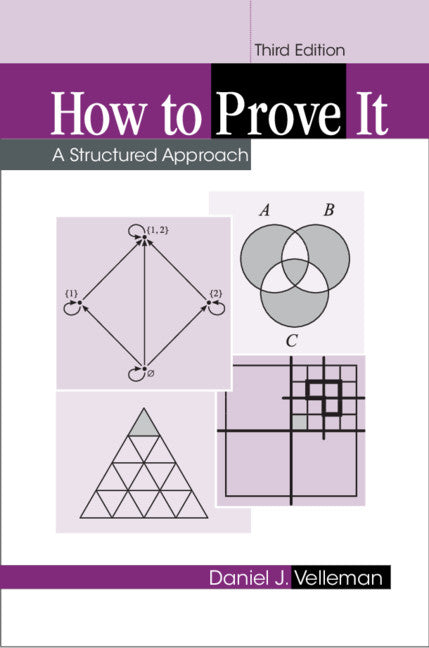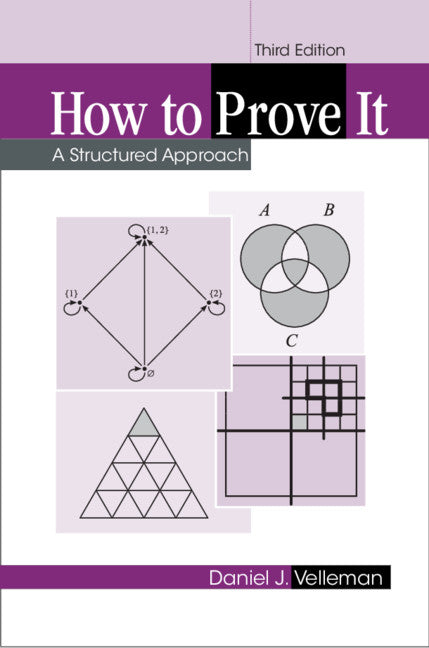Freshly Printed - allow 3 days lead
Couldn't load pickup availability
How to Prove It
A Structured Approach
Helps students transition from problem solving to proving theorems, with a new chapter on number theory and over 150 new exercises.
Daniel J. Velleman (Author)
9781108439534, Cambridge University Press
Paperback / softback, published 18 July 2019
468 pages, 47 b/w illus.
22.7 x 15.3 x 2.3 cm, 0.76 kg
'Altogether this is an ambitious and largely very successful introduction to the writing of good proofs, laced with many good examples and exercises, and with a pleasantly informal style to make the material attractive and less daunting than the length of the book might suggest. I particularly liked the many discussions of fallacious or incomplete proofs, and the associated challenges to readers to untangle the errors in proofs and to decide for themselves whether a result is true.' Peter Giblin, University of Liverpool, The Mathematical Gazette
Proofs play a central role in advanced mathematics and theoretical computer science, yet many students struggle the first time they take a course in which proofs play a significant role. This bestselling text's third edition helps students transition from solving problems to proving theorems by teaching them the techniques needed to read and write proofs. Featuring over 150 new exercises and a new chapter on number theory, this new edition introduces students to the world of advanced mathematics through the mastery of proofs. The book begins with the basic concepts of logic and set theory to familiarize students with the language of mathematics and how it is interpreted. These concepts are used as the basis for an analysis of techniques that can be used to build up complex proofs step by step, using detailed 'scratch work' sections to expose the machinery of proofs about numbers, sets, relations, and functions. Assuming no background beyond standard high school mathematics, this book will be useful to anyone interested in logic and proofs: computer scientists, philosophers, linguists, and, of course, mathematicians.
1. Sentential logic
2. Quantificational logic
3. Proofs
4. Relations
5. Functions
6. Mathematical induction
7. Number theory
8. Infinite sets.
Subject Areas: Algorithms & data structures [UMB], Discrete mathematics [PBD], Set theory [PBCH], Mathematical logic [PBCD], Coding theory & cryptology [GPJ], Information theory [GPF]


